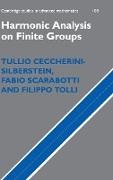Mehr lesen
Informationen zum Autor Tullio Ceccherini-Silberstein is Professor of Mathematical Analysis in the Department of Engineering at the Università del Sannio, Benevento. Klappentext Line up a deck of 52 cards on a table. Randomly choose two cards and switch them. How many switches are needed in order to mix up the deck? Starting from a few concrete problems such as random walks on the discrete circle and the finite ultrametric space this book develops the necessary tools for the asymptotic analysis of these processes. This detailed study culminates with the case-by-case analysis of the cut-off phenomenon discovered by Persi Diaconis. This self-contained text is ideal for graduate students and researchers working in the areas of representation theory, group theory, harmonic analysis and Markov chains. Its topics range from the basic theory needed for students new to this area, to advanced topics such as the theory of Green's algebras, the complete analysis of the random matchings, and the representation theory of the symmetric group. Zusammenfassung Line up a deck of 52 cards on a table. How many switches are needed in order to mix up the deck? This graduate-level book develops the mathematical tools to answer such questions! including the representation theory of finite groups! Markov chains! and the noncommutative version of the classical Fourier analysis. Inhaltsverzeichnis Part I. Preliminaries, Examples and Motivations: 1. Finite Markov chains; 2. Two basic examples on Abelian groups; Part II. Representation Theory and Gelfand Pairs: 3. Basic representation theory of finite groups; 4. Finite Gelfand pairs; 5. Distance regular graphs and the Hamming scheme; 6. The Johnson Scheme and the Laplace-Bernoulli diffusion model; 7. The ultrametric space; Part III. Advanced theory: 8. Posets and the q¿analogs; 9. Complements on representation theory; 10. Basic representation theory of the symmetric group; 11. The Gelfand Pair (S2n, S2 o Sn) and random matchings; Appendix 1. The discrete trigonometric transforms; Appendix 2. Solutions of the exercises; Bibliography; Index....

